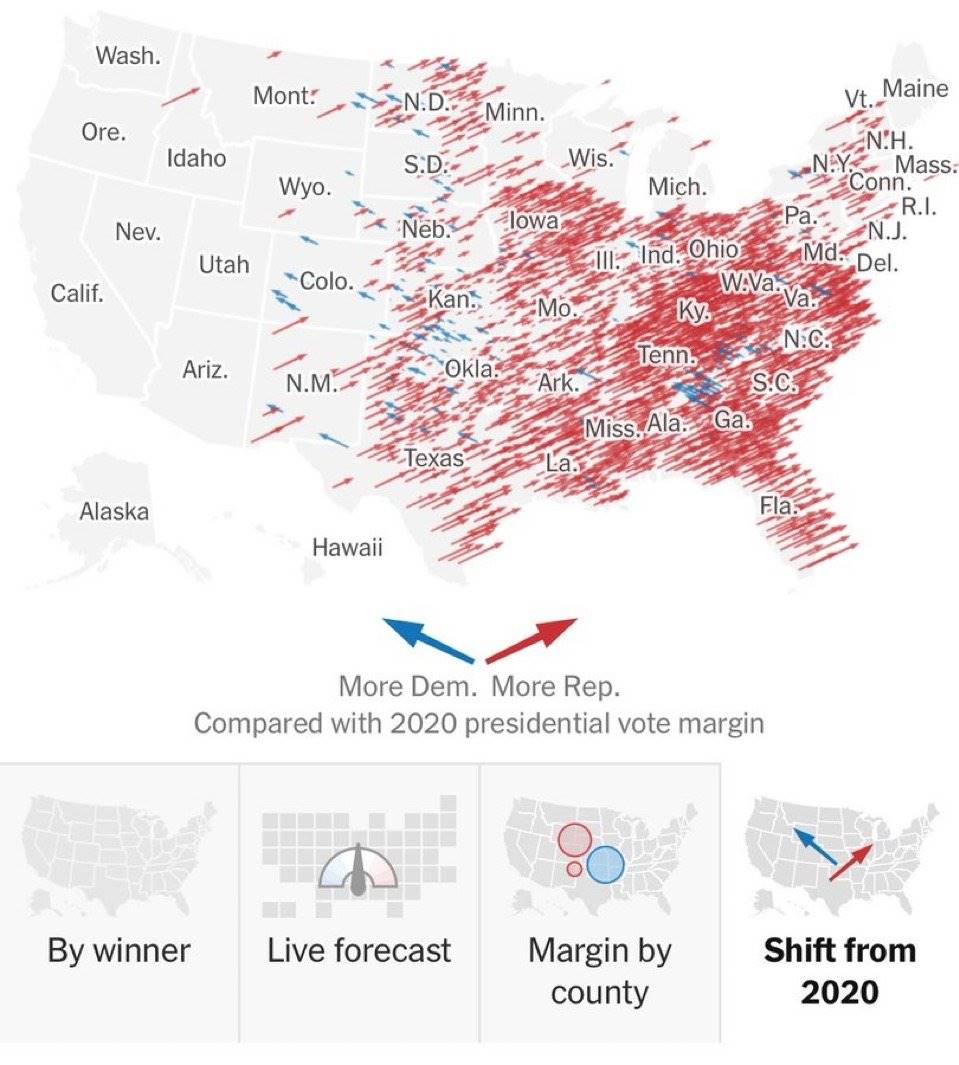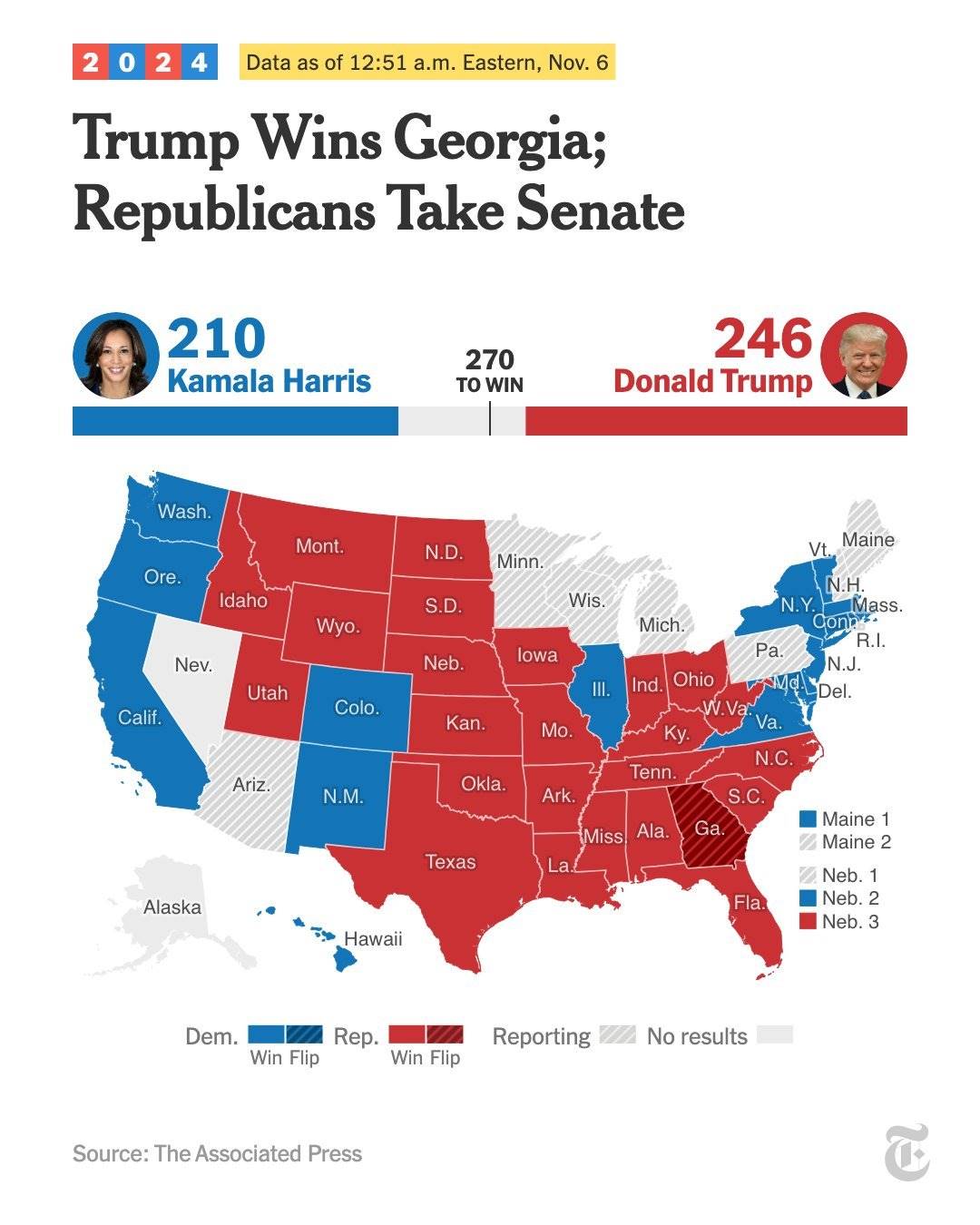Throughout the entire election process, Polymarket was always one step ahead.
Author: Haseeb >|<, Managing partner @dragonfly_xyz
Compiled by: Deep Tide TechFlow
As the dust settles on the election, there is a story that The Wall Street Journal and The New York Times did not report. While mainstream media was busy with the spectacle on television and hesitantly predicting the results of key swing states, the world's largest prediction market, Polymarket, had already made a judgment before midnight Eastern Time, stating that the probability of Trump winning was 97%. This was even before the media announced the results of any swing state.

1. Throughout the election process, Polymarket was always one step ahead
I want to explain why this is the case, as from the feedback I received on Twitter last night, most people have a deep misunderstanding about it.
Polymarket performed better than the media in two fundamental ways.
First, Polymarket's predictions before the election were more accurate. Let's look at polling agencies and analysts. Election models based on polls claimed that the race was a toss-up, while Polymarket gave Trump a clear advantage—before the election began, his winning probability was set at around 62%.
If you remember, mainstream media mocked Polymarket for its differing opinion. They believed Polymarket should align with the views of those model creators! Clearly, this difference meant that Polymarket was not trustworthy. They thought the differing pricing of Polymarket was due to the presence of many Trump-supporting cryptocurrency enthusiasts in its user base. It was backed by Peter Thiel, and only foreigners traded on it. Due to its unregulated nature, they assumed it must be manipulated, with large funds driving up Trump's price. Such criticisms were rampant.
This criticism implies a profound distrust of the market. As if the market cannot be trusted unless there is clear evidence proving its reliability. Of course, if you truly trust the market, you might no longer trust the media. And the media's business model is built on making you distrust other sources of information—otherwise, why would you keep clicking on their endless clickbait articles?
But anyone with market experience knows: the composition of the market does not matter, whether it consists of Republicans, Democrats, foreigners, or others. In fact, we know that JP Morgan used Polymarket, and some of the largest hedge funds in the world are also using it (most of which have non-U.S. subsidiaries). It is integrated into Bloomberg Terminal and cited on CNN. However, when the media talks about Polymarket, it seems as if it is just a platform similar to 4chan.
You need to know that Polymarket had a trading volume of $3.6 billion in the presidential election. This is the largest trading volume in the history of election betting markets, exceeding any other election market by an order of magnitude. In comparison, this is far more significant than the career prospects of any single prediction model creator. The market is effective because too many interests depend on the correct answer.
Those so-called biases—like Trump-supporting cryptocurrency enthusiasts or non-Americans—did not affect the market's accuracy. (In hindsight, non-Americans might be better at predicting election outcomes calmly.)
But the identity of the participants does not matter. Prediction markets aggregate information from many different participants to derive prices that transcend biases. The market does not care about ideology; it only cares about whether the outcome is correct.
The fact is, Polymarket was more accurate than any polling agency or model creator.
Now, I want to clarify: the difference between 60/40 and 50/50 sounds significant, but in reality, it is not. Elections are inherently filled with uncertainty. According to high school statistics, if you want to determine whether a coin is biased towards 60/40 rather than 50/50, you need to conduct more than 100 coin toss experiments to be 90% confident. The outcome of "Trump winning this election" does not indicate whether the coin is 60/40 or 50/50.
What I want to express is not that Polymarket is completely correct and prediction models are completely wrong. In fact, the difference between them is not large. I want to emphasize: the market consistently set Trump's winning probability higher than the polling results. It is important to know that the market is aware of the conclusions of polls and analysts. The market integrates all existing information, but Polymarket's pricing differs from that of polling agencies. The only explanation analysts could think of is that Polymarket has biases.
They lacked the humility to consider that perhaps Polymarket might have information that polls failed to capture.
The accuracy of polls has significantly declined. This is now very clear. Before the internet became widespread, the accuracy of polls was much higher. At that time, the response rate for landline polls often exceeded 60%. Today, that rate is only about 5%. This means polling agencies face enormous sampling biases that cannot be corrected by simple statistical adjustments. (Moreover, polling agencies—as sellers of a product and needing to maintain their reputation—often converge their predictions to avoid being outliers, which affects the aggregation of poll results.)
Additionally, Trump is a particularly divisive figure in American politics. Therefore, in three consecutive elections, we have seen polls severely underestimate support for him, which is known as the "shy Trump voter" effect.
Polymarket may believe that polls missed some important information. Polling agencies claim they have updated their models and made adjustments. Polymarket's response is: I don't believe it. And it turns out, Polymarket was right.
Let me emphasize again! Polymarket does not assert that Trump has a 90% chance of winning. 62% is not an absolute number, as elections are filled with uncertainty. What confuses me is that the media showed no curiosity about this difference. Perhaps Polymarket knows something we do not? Or is there some information we overlooked that was not reflected in the polls?
Remember, Trump's performance nationwide far exceeded polling expectations, whether in Republican or Democratic states. He won every swing state and even won the popular vote, which seems unbelievable to most.
Do you really have confidence that there is no other way to discover the true sentiments of tens of millions of Americans without relying on those traditional polling agencies and outdated internet surveys?
This is what the market teaches us. Markets are smart, but they do not explain the reasons—they only show the results.
2. This leads to the second way Polymarket surpasses the media
Polymarket predicted election results in real-time before the media. On election night, the unpredictability of the market was fully revealed. Polymarket reacted quickly and vigorously before any swing state results were announced. According to Polymarket's judgment, the election was already settled by midnight, while mainstream media did not officially announce results until 6 AM the next day. Why is that?
First, Polymarket identified an important correlation that mainstream media was unwilling to explain to viewers. Polling errors are rarely random; they often have correlations across states. So, when traders saw Trump significantly exceeding polling expectations in some less competitive states, like New York City (a typical Democratic state) or Florida (a typical Republican state), it indicated that the nationwide polling error could be substantial.

Polymarket quickly captured this, realizing that swing states were no longer competitive. By 11:30 PM, Polymarket had set Trump's chances in Pennsylvania at 90%, while only a small portion of Pennsylvania's votes had been counted.
Prediction markets do not wait for formalities or commentators' analyses. They do not care whether they break the traditional ritual of waiting for vote counts. Remember the outrage from viewers when Fox News prematurely announced the results in Arizona in 2020 (which ultimately proved correct)? Trump even threatened to boycott the channel. This reinforced a lesson—major media must honestly count votes and not be overly clever.
However, the market does not care about the dramatization of the process; they only care about the results. Clearly, explaining to CNN's audience that the election is over, that polling errors in non-competitive states are too large, and that Kamala's prospects are bleak, and that they should go to sleep instead of waiting for swing state results, is a very difficult task. This contradicts the narrative that the media has been reinforcing for months. What the public needs is a simple, easy-to-understand story where everyone is clear about the development of the story—you have to wait for the swing state results until a certain color bar crosses the 270 vote threshold.

At 12:51 AM, The New York Times was still displaying dramatic charts and headlines. Meanwhile, Polymarket had already set Trump's chances at 98%.
Thus, election observers stayed up all night just to let the media complete its meaningless color-filling ritual.
Polymarket traders are not bound by narratives and have no dramatic motives for ratings—they simply provide judgments directly.
@shayne_coplan, the founder of Polymarket, stated that Trump's campaign team was paying attention to Polymarket to better understand how to interpret the odds. The media even dared to complain when Trump announced victory when the vote count reached 267—at that time, Polymarket's odds had already dropped to show 100%.
The charm of the market lies in its ability to respond quickly to new information. Traders who can integrate information the fastest will be rewarded—profits. This is something traditional media cannot do, as they need to process events through multiple layers of explanation, narrative construction, and internal politics (like Murdoch's intervention in the 2020 Arizona results).
Polymarket's decentralized nature bypasses all these formalities, allowing information to flow freely and without interference.
Last night's events are worth reflecting on. This election was a strong warning to the Democrats, a rejection of the expert class, and an immune response to arrogant media.
However, for Polymarket, this night was a perfect testament to its value. For me, the lesson learned is: when significant events happen in the world, it might be better to skip those column articles and directly check Polymarket's odds. Let me state: I am an investor in Polymarket. I have always been passionate about prediction markets, and now their value is finally recognized, which makes me very pleased. Additionally, since I am very tired now, I may have made some mistakes in details, but you should understand my point.
This article is written for some people I know who are skeptical about prediction markets and believe the media's dismissal of Polymarket. If you know anyone who has doubts about prediction markets, feel free to forward this article to them.
免责声明:本文章仅代表作者个人观点,不代表本平台的立场和观点。本文章仅供信息分享,不构成对任何人的任何投资建议。用户与作者之间的任何争议,与本平台无关。如网页中刊载的文章或图片涉及侵权,请提供相关的权利证明和身份证明发送邮件到support@aicoin.com,本平台相关工作人员将会进行核查。




